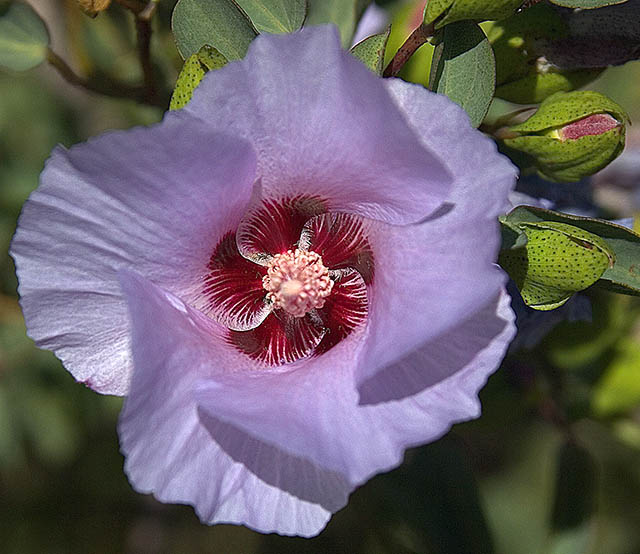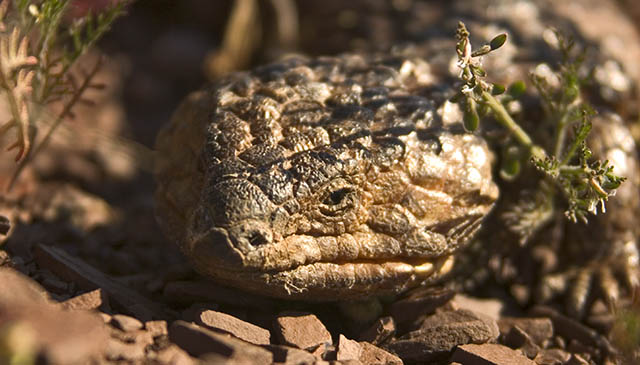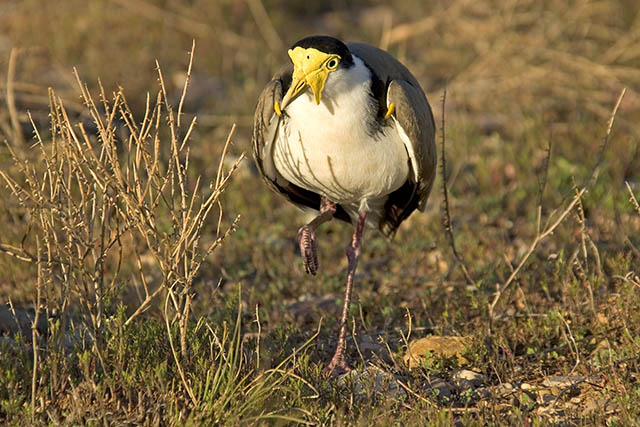
The Sturt Desert Pea is often seen in large groups. Photographing a single flower shows just how unusual the bloom is. © Copyright Peter MacDonald Photography 2013
Flowers and animals are like children, best photographed from their level rather than an adult’s view. But sadly this idea is all too often forgotten.
Getting down and dirty with the flowers though is not without its discomforts and miseries.
The Sturt Desert Pea is a beautiful but lowly bloom and in this case ants brought the misery but the result was worth the pain.
Burrs, prickles and three cornered jacks are a common discomfort in the Flinders Ranges and Outback and there’s bound to be plenty around when you are flat out on the ground getting a photo of a Rosy Dock.
From above there would be no way to have the sunlight backlighting the beautiful ruby coloured leaves.

The exquisite Sturt Desert Rose, a hibiscus as it turns out is a little more elevated but it is still worth getting a low aspect. Copyright Peter MacDonald Photography 2013
It would be unusual if there wasn’t some kind of breeze blowing when shooting flowers. For that reason it is almost essential to have a fast shutter speed – around 250th of a second or more would be ideal.
This will probably have to be achieved by a low f-stop – maybe around f2.8 if your lens is fast enough and an increase in ISO to at least 400.
That will also mean that much of the background will be out of focus. A nice effect that highlights the flower.
.
Again there’s a challenge trying to eyeball a sleepy lizard, common around the area but generally seen from above. This chap seemed less inclined to display his deep blue tongue and hiss loudly when I met him on his terms.
Similarly this Masked Lapwing looks so much more interesting down at ground level.
A good rule of thumb for flowers, animals, children, even landscapes is to find an aspect that is not the normal eye level at which we see things every day.




My Dad taught me to get down on the ground and take photos from unusual angles so I get what you mean
Your Dad advised you well Deborah. You see so many people these days staring into the screen on the back of their camera at eyes height and you sort of know the photo will be a bit average. Happy shooting. Peter